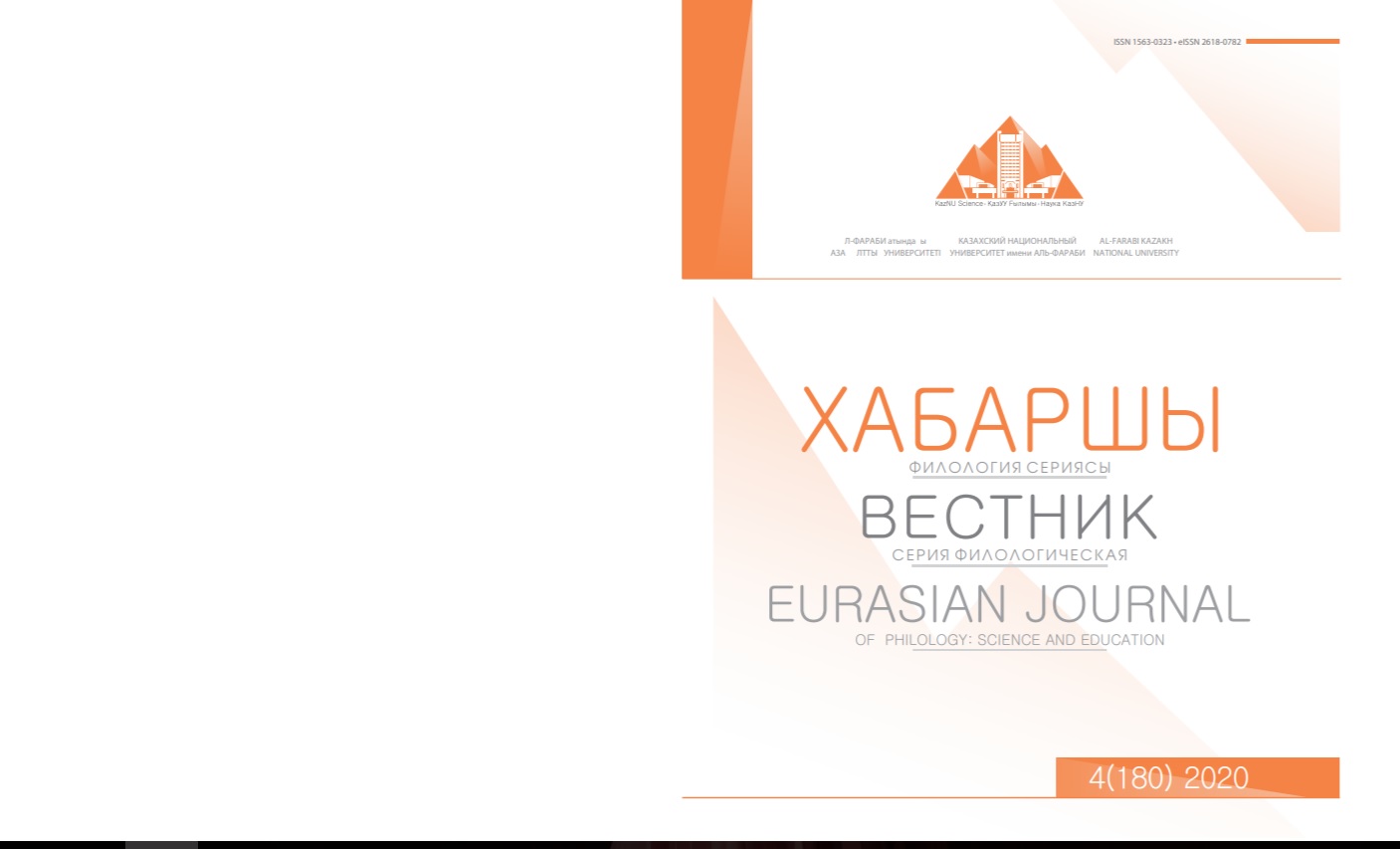The place and role of the methonymic image in the formation of the medieval phraseology fund (on the basis of the “Dictionary of the Russian language of the 11th-17th centuries”)
DOI:
https://doi.org/10.26577/EJPh.2020.v180.i4.ph7Abstract
The article is dedicated to the problem connected with the study of the specifics of the semantic
structure of phraseological units of the Great Russian nationality epoch. The aim of the this work is to
clarify the ways of establishing, developing and further formation of phraseology fund of the Middle
Ages, and the Russian phraseology fund as a whole is formed. On the basis of the analysis of the idiom’s
internal form, the units constructed on methonymic transfer are selected for the study by idiom. The
classification of the language material has made it possible to identify several types of methonymic
transfer, which are actively involved in the formation of the medieval Russian phraseology. For each type
of methonymic transfer examples of language units from different spheres of operation are given. The
analysis of the language material took into account the specifics of the medieval book culture, in particular
the sphere of the use of phraseological units (religious, legal and military spheres). In this article the
following methods and techniques of studying and descriptions of the idioms had been used: descriptive
method with some elements of component analysis; the technique of complete sampling of the facts;
classification; the technique of statistics. As a result, the study highlighted the most productive types of
methonymic image underlying the formation of sustainable units. The study made it possible to clarify
the ways in which the phraseological fund of the Middle Ages was formed. The study evaluates this period
as one of the important stages, which determined






